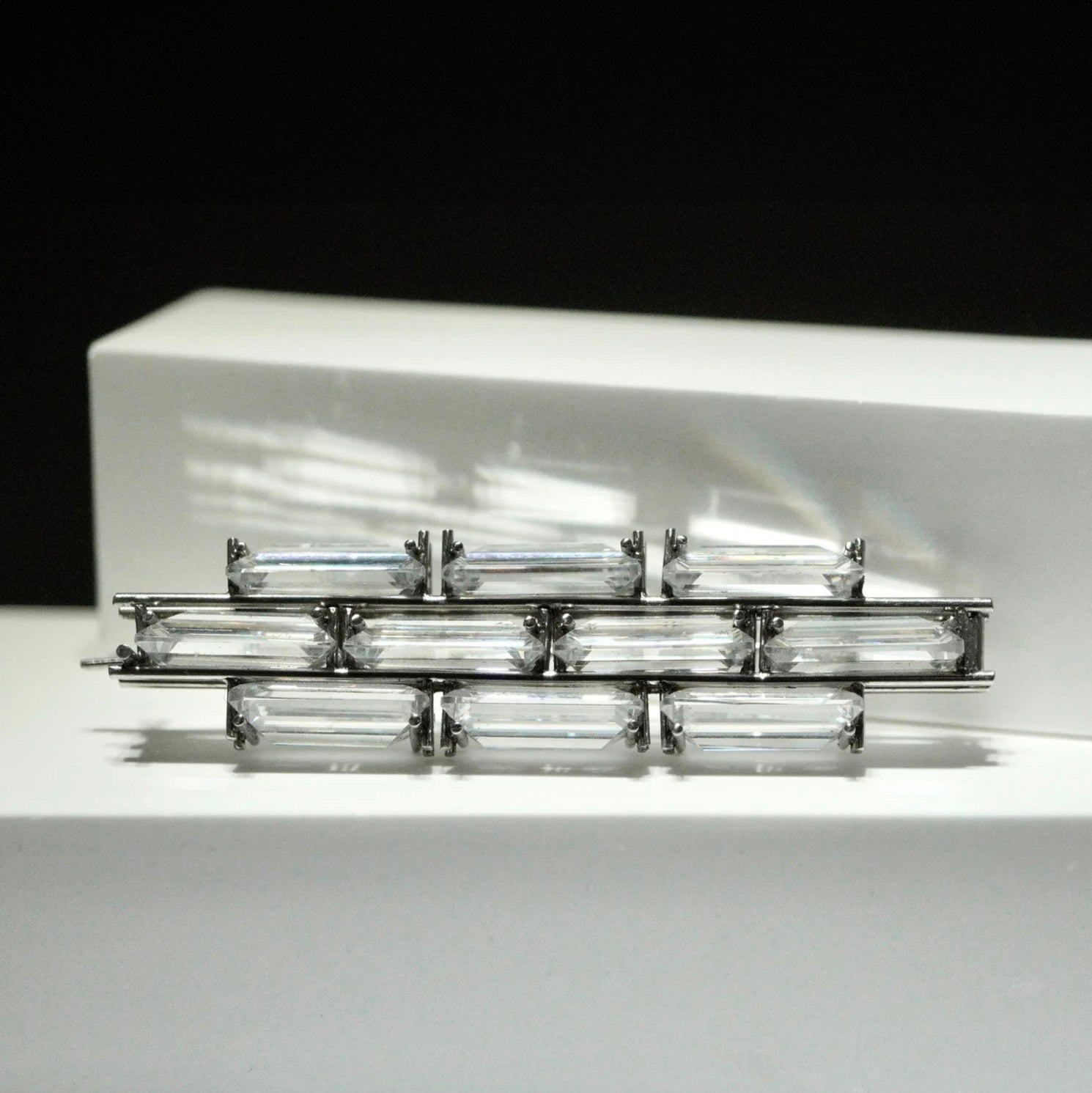Could you share how everyday life influences your creative process, especially in capturing moments that inspire your designs?
I normally get inspiration from my daily life. I capture inspiring moments with my phone, mainly by photos and rarely in texts. I get inspiration from exhibitions, books, and other online resources. My inspirations are not limited to jewellery. I am interested in sculpture, ceramic, objects, and architecture too.
We're curious about your transition from International Economics and Trade to Jewellery Design. What inspired this shift, and how has your background in economics contributed to your approach in the jewellery industry?
My background is somehow not related with jewellery. Previously, I studied International Economics and Trade as my bachelor’s degree in Shanghai. And after that, I applied for Central Saint Martins and graduated from the course MA Jewellery Design. It was a big shift for me, absolutely, from economics to design, but I am always passionate about the creative industry. And my previous major does help me a lot to have a better understanding on the market and client base where I would like to build my jewellery business internationally.
Kinetic jewellery brings a unique dimension to wearable art. Can you elaborate on what fascinates you about incorporating movement into your pieces?
I am so drawn to kinetic sculpture and movements.
“Kinetics brings about a form of magic, instantly triggering the viewer's interest in an immersive experience. When it comes to jewellery, ambiguous artefact between functional use and object of contemplation, the kinetic experience is always a unique adventure. These devices engage the observer or wearer, who activates them to understand their mechanism. ”
I am obsessed with kinetic sculptures created by artists, such as Alexander Calder, Jean Tinguely, Naum Gabo and Friedrich Becker.

The idea came from one of the historical Sumerian writings where told a story of distance.
“The Anunnaki were descendants of An and Ki, the god of the heavens and the goddess of the earth. They were a group of deities of the ancient Sumerians, Akkadians, Assyrians and Babylonians, who lived on the planet Nibiru. Nibiru collided catastrophically with Tiamat, located between Mars and Jupiter. Tiamat split in two. Nibiru struck one part on a second pass, which became the asteroid belt. The other part was pushed into a new orbit, which became the Earth. Nibiru swings by our Earth every 3,600 years giving the Anunnaki their only chance to communicate across vast distances.”
NIBIRU collection is inspired by the story. And sound is a media which can overcome distance. And by overcoming distance, we overcome differences. And I want to express the idea of distance by incorporating both physical sound and electronic sound into my jewelleries.
I soldered and made all the electronic parts. My dear tutor Marguerite Tricaud, who used to be the Technician at Central Saint Martins and now the Creative Director of THEORIZ studio, helped me test and modify the electric circuits. And my friend Chang Lu helped me with the electronic sound clips in the piece of CALLISTO.
The mythological references in the names of your pieces add a layer of intrigue. How do these stories complement the themes of your collections, and what drew you to select them?
The names of each pieces are named stars in the planet. NIBIRU collection are a series of kinetic jewellery which in my imaginations are a set of communication devices for the Anunnaki on the mysterious planet NIBIRU to communicate with the Anunnaki on the earth.

Could you provide insight into your design journey from initial concept to the final creation of your pieces?
In terms of the process, I started with the inspiration of sound. And I desired to express the idea of distance and difference. Then, I researched more around the idea and drew sketches, transforming my thoughts into shapes. After that, I made models with proper materials and scales to develop my ideas. The creative process came back and forth until I was satisfied with what I was doing. The pieces are created and handmade by myself in my London studio.
With the NIBIRU collection offering a unique interactive experience, what emotions or messages do you wish to convey to those who wear your creations?
This is a good question. I haven’t thought in this way. On one hand, apparently, they could interact with my jewellery pieces. They could play with it and hear a bit of sound. Apart from that, I hope the wearers could develop their own feelings or interactions with the pieces without limitations. Jewelleries are always connected with bodies and express personal feelings.
Achieving such notable recognition early in your career must be impactful. How have these awards influenced your journey as an artist and the international recognition of your work?
It was a good start. They let more people know my jewelleries and know about me.
For those embarking on their own journey in jewellery or metalwork, could you offer any guidance or advice based on your experiences?
Stay happy and keep going.
Looking ahead, are there any particular projects, collaborations, or new artistic avenues you're eager to explore?
I will have an exhibition in Galleria Carlo Lucidi in Rome, Italy in upcoming February. The name of the exhibition is Nexus together with 7 other designers from different counties.





Leave a comment
This site is protected by reCAPTCHA and the Google Privacy Policy and Terms of Service apply.